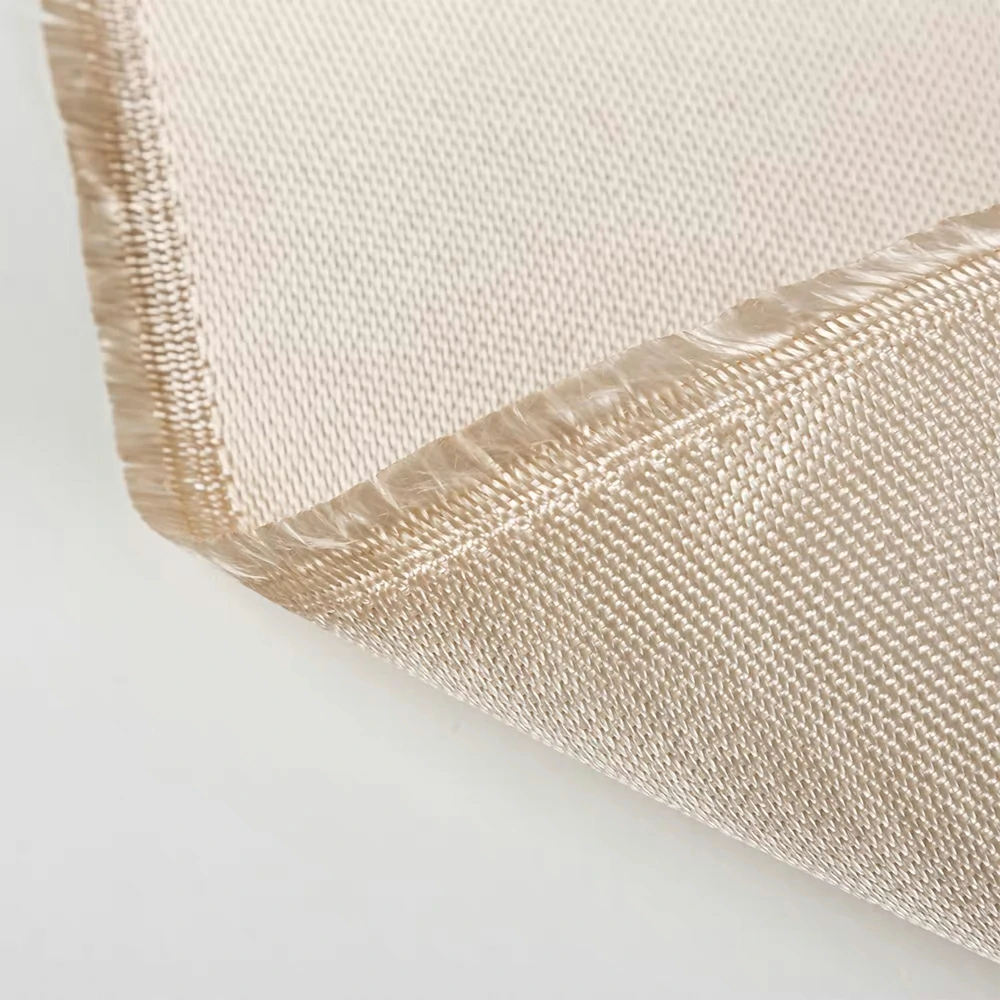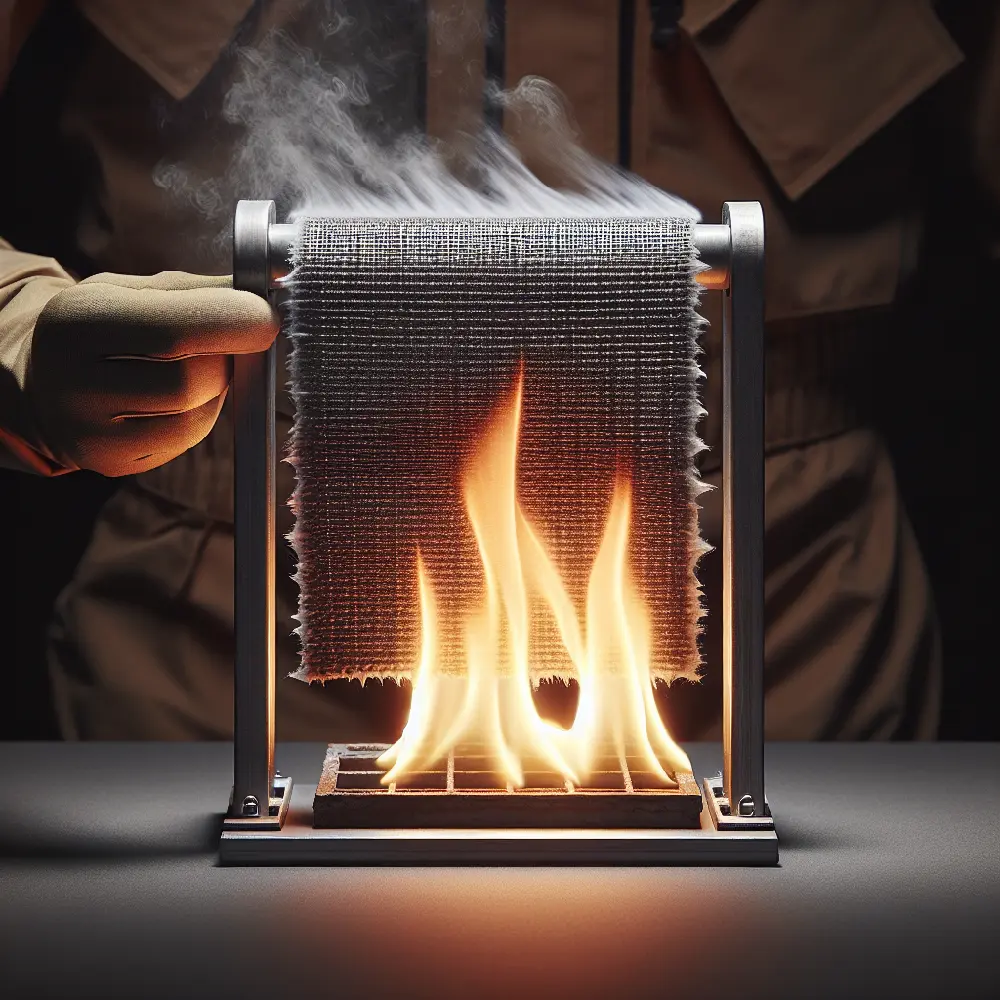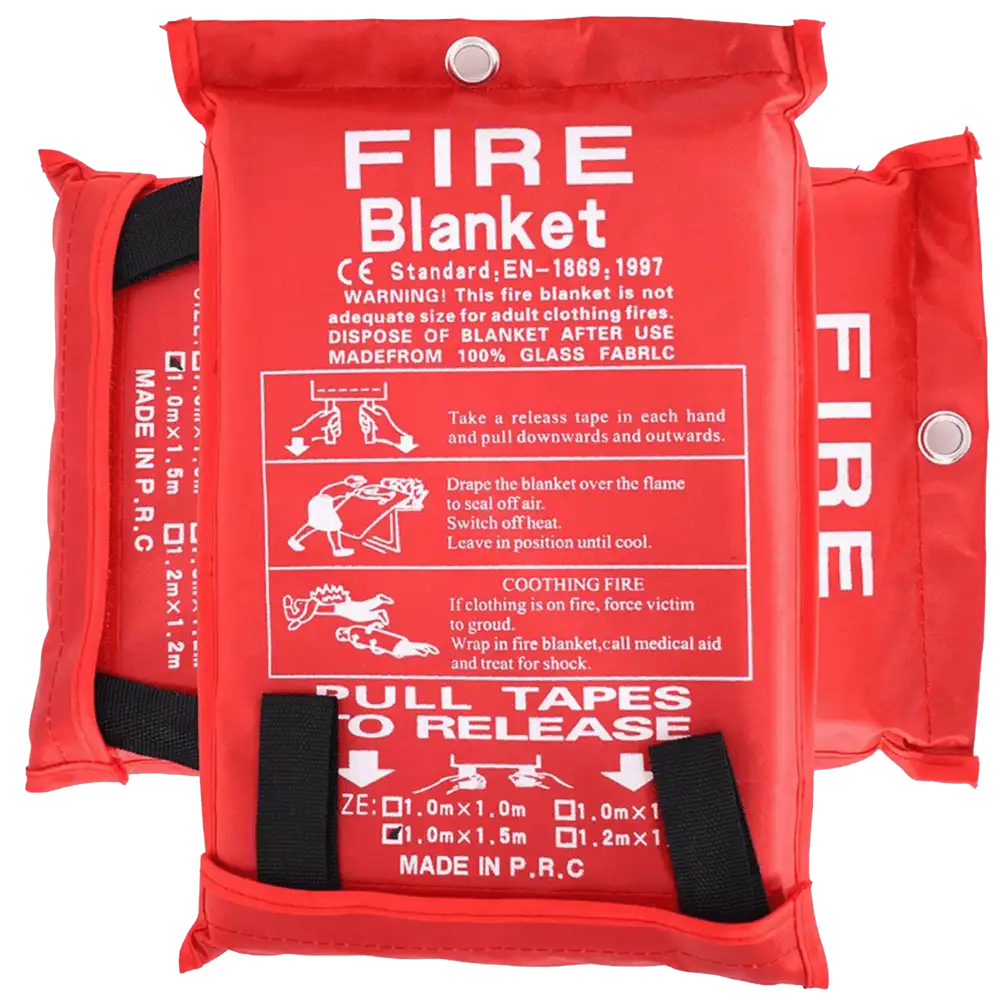Fiberglass, a composite material made from fine fibers of glass, is widely recognized for its myriad uses in various industries. But when it comes to safety, questions often arise about its behavior in fire situations, its flammability, and how it stands up to intense heat. Let's delve into the properties of fiberglass and fiberglass insulation to understand their performance in fire-related scenarios.

To address the question "Is fiberglass flammable," we must consider the material's composition and characteristics. Fiberglass itself is composed of glass fibers, which are inherently non-flammable. The glass strands can withstand high temperatures up to a certain point without catching fire. Thus, in its pure form, fiberglass is not a flammable material.
The term "fireproof" is often associated with materials that can entirely withstand exposure to fire. Pure fiberglass can be considered fireproof because it doesn't burn or contribute fuel to a fire. However, when combined with certain resins or binders, which may be used in some fiberglass products, the overall fire resistance can be compromised.
Fire resistance is a crucial property in construction materials. Fiberglass is known for its excellent fire-resistant capabilities. This means that when used in applications such as insulation, it can help prevent the spread of fire, providing crucial time for inhabitants to escape and for firefighters to control the blaze.
Understanding how fiberglass interacts with heat is key to effectively utilizing it in environments that may be exposed to high temperatures.
The melting point of fiberglass varies due to the impurities, but typically it's around 1000 degrees Celsius and 1200 degrees Celsius (1,832 to 2,192 degrees Fahrenheit), which is relatively high compared to many other materials. This property is essential in manufacturing and industrial settings where materials are often exposed to high heat.
After knowing about the the properties and flammability of fiberglass let's delve into the answers to common questions about fiberglass insulation. It is a common material used within the construction industry due to its thermal properties and its behavior in fire situations.
When we consider whether fiberglass insulation is fireproof, we're looking at its ability to resist ignition and not contribute to the spread of fire. Fiberglass insulation is commonly treated with a flame-retardant resin to enhance its fire resistance, making it less likely to catch fire compared to other types of insulation.
While the glass fibers themselves are non-flammable, the overall flammability of fiberglass insulation can depend on the presence of any flammable bonding agents or facings. However, most modern fiberglass insulation is designed to be fire-resistant.
The term "combustible" describes materials that can ignite and burn. As for fiberglass insulation, the fibers do not sustain combustion. The non-fiberglass components may have a different combustion profile, which is why it's essential to adhere to all safety guidelines when installing and using fiberglass insulation.
Fiberglass insulation is indeed fire-resistant, providing a high level of protection against the spread of fire within buildings. This attribute makes it a preferred choice for insulation in residential and commercial constructions.
Continuing our discussion on the performance of fiberglass under fire conditions, it's important to consider various scenarios where fire safety is critical.
Fiberglass insulation's fire-resistant qualities have been a key factor in its widespread adoption. It's often specified by architects and builders who are looking to enhance the fire safety of their projects. In many residential and commercial buildings, the presence of fiberglass insulation in walls, attics, and crawl spaces has been shown to slow the spread of fires, affording occupants more time to evacuate and reducing the speed at which fires can spread through a structure.
When discussing whether fiberglass insulation is combustible, it is essential to differentiate between the glass fibers and any additional materials used in the product. The glass fibers themselves do not combust, but the paper or foil backing often used for vapor barrier purposes can burn if exposed to an open flame. Therefore, it's crucial to install fiberglass insulation correctly and to ensure that any fire barriers required by local building codes are properly implemented.
Beyond insulation, fiberglass's thermal properties are leveraged in numerous applications where heat management is essential.
The inherent heat resistance of fiberglass is not only beneficial for industrial applications but also for safety equipment. For instance, firefighters' gear often includes fiberglass components to provide protection from the intense heat encountered during firefighting operations. Moreover, in the event of a fire, structures containing fiberglass materials are less likely to experience structural failure due to their ability to withstand high temperatures for extended periods.
The temperature rating of a particular fiberglass product is a defining factor when selecting materials for use in high-heat environments. For example, when choosing materials for a furnace room or near heating ducts, it's crucial to select a fiberglass product with a temperature rating that exceeds the maximum temperatures expected to be encountered.
The installation of fiberglass insulation is one of the many steps that can be taken to mitigate fire risks in buildings.
While the insulation itself does not burn, improper installation near electrical fixtures or incorrect handling of the vapor barriers can pose risks. Contractors must follow all safety guidelines and building codes when installing fiberglass insulation to prevent any potential fire hazards.
The market offers various fiberglass insulation products that are specifically designed with fire safety in mind. These products have been tested to meet stringent fire safety standards and are rated for use in spaces where higher fire resistance is required.
Fiberglass's ability to withstand high temperatures has seen it adopted in advanced applications, from aerospace to automotive industries.
In the automotive sector, the heat shield serves as a critical component to protect the vehicle from the heat generated by its mechanisms. Fiberglass heat shields are commonly found close to engines and exhaust systems, providing a barrier that reflects heat and prevents damage to sensitive components.
In industrial settings, fiberglass is used in applications that require resistance to high temperatures, such as furnace linings, gaskets, and wraps for pipes carrying hot fluids. The material's capacity to withstand intense heat without losing its structural integrity makes it indispensable for these applications.
The inherent properties of fiberglass make it a robust material for various applications. However, to increase its utility, fiberglass fabrics are often treated with specialized coatings that enhance their resistance to heat, fire, chemicals, and abrasion. These coatings not only extend the life of the fiberglass but also expand its range of applications.
Silicone-coated fiberglass fabrics are widely used due to their enhanced properties. The silicone coating adds to the already substantial heat resistance of fiberglass, allowing it to withstand continuous temperatures up to 500°F (260°C). This coating also imparts water and oil repellency, making it suitable for outdoor and industrial applications where moisture and lubricants are present. Furthermore, silicone-coated fiberglass has increased flexibility and tear strength, which is beneficial for manufacturing protective covers, curtains for hot work operations, and expansion joints.

Graphite-silicon-coated fiberglass fabric takes advantage of the natural heat resistance of graphite. When combined with silicone, the graphite enhances the fabric's ability to withstand extreme temperatures — typically up to 1000°F (538°C) for short bursts. This dual coating also improves abrasion resistance and adds to the non-stick properties of the material. It is particularly useful for making welding blankets, fire curtains, and heat shields in environments with high-temperature exposure and potential contact with hot metal splashes or flames.

Aluminum foil laminated fiberglass fabric is designed to reflect radiant heat, making it an excellent choice for heat shielding applications. The aluminum foil reflects up to 95% of radiant heat and also protects the underlying fiberglass fabric from moisture and chemicals. This type of coated fiberglass is commonly used in the automotive industry for heat shields, as well as in the construction of insulated equipment covers and fire-resistant barriers.

Ceramic-reinforced fiberglass fabric is a high-performance material that offers superior heat resistance, capable of withstanding temperatures up to 2000°F (1093°C) in continuous service. The ceramic coating significantly enhances the thermal insulation properties of the fiberglass fabric, making it an ideal solution for protective clothing such as fire-fighting apparel, and for industrial applications involving direct flame or extreme heat conditions, such as furnace linings and pipe insulation.

When choosing a fiberglass fabric for a particular application, it is crucial to consider the type of coating that will best suit the environmental conditions and performance requirements. Silicone and graphite-silicon coatings offer excellent heat resistance and durability, while aluminum foil laminates provide exceptional reflectivity for radiant heat. Ceramic-reinforced fabrics offer the highest level of thermal protection for the most demanding heat environments.
The selection of the appropriate coated fiberglass fabric can significantly affect the safety, efficiency, and longevity of the application it is used for. By understanding the distinct benefits of each type of coating, manufacturers and end-users can make informed decisions that leverage the full potential of fiberglass fabrics in their specific contexts, ensuring optimal performance and safety standards.
Fiberglass's role in fire safety and heat management cannot be overstated. Its unique properties make it a preferred material for insulation, protective gear, and as a heat shield in various industries. The non-flammability of the glass fibers, combined with a high melting point, ensures that fiberglass products offer reliable protection in scenarios involving high temperatures and potential fire exposure.
Whether in residential construction, automotive design, or industrial applications, fiberglass provides a layer of safety that is recognized and valued. As we continue to prioritize safety and durability in our materials, fiberglass stands out as a material that offers peace of mind, knowing that it will perform as expected when it matters most.
In considering the use of fiberglass in your next project, it's essential to understand the material's fire-resistant properties and to select products that align with the specific fire safety requirements of your application. By doing so, you can harness the full potential of fiberglass to protect against heat and fire, ensuring that your projects are not only efficient and durable but also safe for all occupants.
 Top 5 Heat-Resistant Wonders: How High Silica Fiberglass Fabric Excels in Extreme Temperatures!
Top 5 Heat-Resistant Wonders: How High Silica Fiberglass Fabric Excels in Extreme Temperatures!
 Is Kevlar Fireproof? Unveiling the Truth Behind Kevlar's Flame Resistance
Is Kevlar Fireproof? Unveiling the Truth Behind Kevlar's Flame Resistance
 Do Fire Blankets Work? Understanding Their Functionality and Benefits
Do Fire Blankets Work? Understanding Their Functionality and Benefits
 2023, Heaterk's Year-End Recognition Meeting!
2023, Heaterk's Year-End Recognition Meeting!